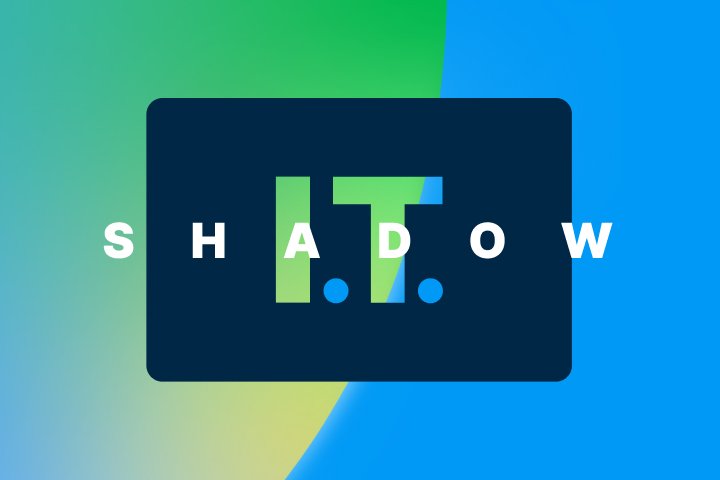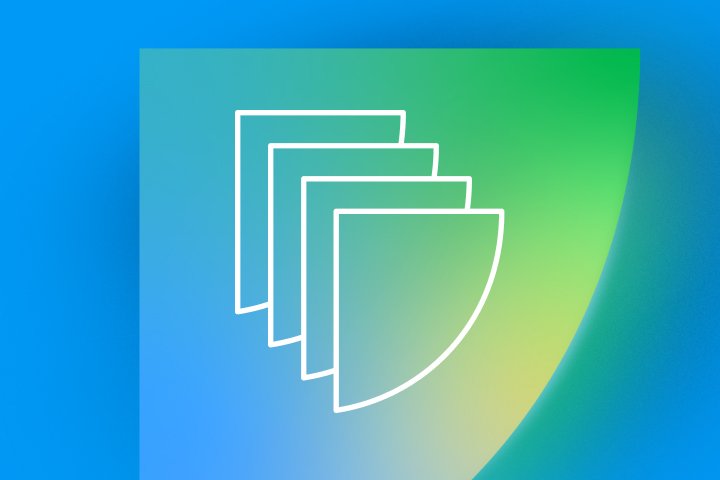The strength of your company’s security comes down to every single employee. This comprehensive guide to employee information security awareness is for business owners, IT managers, and team leaders who know that data security is more than just an IT issue; it’s a responsibility shared across the entire organization.
Inside, you'll discover how to make your employee security training program truly effective. We’ll talk about the key components of a robust data security training program, share actionable steps for educating your team on cybersecurity, and reveal the most common data security threats you should be preparing your employees for.
Read on to learn how a proactive approach to data security training can protect your organization and prevent data breaches.
Why educate your employees about cybersecurity?
The numbers don’t lie: According to the 2024 Verizon Data Breach Investigations Report, 68% of all data breaches involved the human element.
There’s no denying it. You need to educate your employees about cybersecurity, because knowledge is power. If your employees are aware of potential cyber threats, they will be in a better position to help prevent data breaches.
What are the key components of an effective data security training program?
A solid employee data security training program isn’t just about checking boxes—it’s about giving your team with the practical skills they need to do their part in protecting your organization and its data every day. Here’s what you need to cover:
- Phishing prevention: Show your team how to spot sophisticated phishing attempts and social engineering tactics. Keep it real with clear examples that highlight what suspicious emails look like and what red flags to watch for.
- Password management: Explain why switching from weak, common passwords to robust passphrases—ideally using reputable password managers—can dramatically reduce the risk of credential theft. For this to work, your password policy needs to be bulletproof. Make it a priority to enforce the use of strong, unique passwords and emphasize the role of multi-factor authentication.
- Insider threat awareness: Make sure everyone understands that huge numbers of threats can come from within the organization, whether by mistake or on purpose. Encourage a culture where following company policies and reporting any odd behavior is second nature. Read more about preventing insider threats.
- Data handling and classification: Train employees on how to handle, store, and classify data based on its sensitivity. It’s about knowing which information needs extra protection, what data cannot be shared (in emails, messages, or even in AI tools), and treating it accordingly.
- Cyber threat mitigation and incident reporting: Establish a clear, simple process for reporting security issues. Train employees on your incident response plan so that if, for example, malware or ransomware strikes, everyone knows exactly who to contact and how to do it, so that even small problems don’t snowball into major data breaches.
- Secure remote work practices: With more people working remotely or using personal devices for work, provide straightforward guidance on staying secure. Emphasize the use of secure VPNs, keeping software up to date, and being cautious with home and public networks. Further Reading: BYOD: Best policies for Bring Your Own Device
A comprehensive information security training program not only covers the basic and obvious threats but also strengthens your overall corporate cybersecurity education, ensuring consistent workplace data protection.
Actionable steps to create a data protection culture in the workplace
Here’s a step-by-step guide outlining what you should aim to educate your employees on, along with how to implement these strategies effectively:
Step 1: Develop a comprehensive cybersecurity policy
Start by creating a clear cybersecurity policy that outlines key practices such as acceptable use of company devices and networks, data handling and storage procedures, and guidelines for strong password management. Your policy should also include secure practices for remote work and clear protocols for reporting suspicious activity.
When drafting your policy, involve both your IT and HR teams to ensure that it is practical, aligns with your company culture, and supports productivity without sacrificing security. Remember, a good security policy should be:
- Easy to understand, using simple language without technical jargon,
- Easy to implement so it doesn’t hinder day-to-day operations,
- Easy to remember, perhaps with a step-by-step or printable guide for quick reference.
Learn about the ISO/IEC 27001 methodology for setting up an effective information security management system in your organization.
Step 2: Tailor training to your organization’s specific needs
Instead of a one-size-fits-all approach, start by analyzing your organization’s unique environment and focusing on the threats that are most relevant to your business. For example, if your company handles sensitive financial data, emphasize risks related to advanced phishing schemes and fraudulent transactions. In a healthcare setting, the focus might be on protecting patient records and complying with privacy regulations.
An important part of this tailored approach is training by role. Different teams have different responsibilities and exposure levels, so customize the training content accordingly. Technical teams may need a deep dive into complex threats like insider risks and sophisticated malware, while front-line staff could benefit more from practical advice on recognizing suspicious emails and safeguarding sensitive data in their everyday interactions.
Finally, consider the variety of work environments within your organization. If your team works remotely or uses personal devices under a BYOD policy, include targeted modules that cover the security challenges of home networks, personal device vulnerabilities, and secure remote access.
Further reading: Keeping your business safe in the age of remote work
Step 3: Help employees understand cybersecurity fundamentals
Make sure your team gets the basics of cybersecurity in a way that actually sticks. This means not just listing threats like AI, phishing, and ransomware, but also talking about how simple mistakes can open the door to big problems.
It’s important that everyone sees why protecting data—whether it’s company info or customer details—is so crucial.
Rather than just lecturing, consider hosting interactive sessions or workshops. Use real-life examples that your team can relate to and explain the concepts in everyday language. When employees see how these threats can impact their work, they’re more likely to pay attention and take the necessary precautions.
In the end, when your team understands both the “what” and the “why” behind your security measures, they’ll be more engaged and proactive about keeping your organization safe.
Step 4: Provide regular cyber training and updates
Set up a consistent schedule of training updates. This can mean organizing quarterly refresher sessions or webinars and offering e-learning modules that employees can complete at their own pace.
To ensure that security stays top-of-mind, supplement your core training with ongoing communication tools, such as:
- Email campaigns: Send a short, simple email every two weeks highlighting one key security rule.
- Posters and LED visuals: Display clear security messages around the office.
- Security brochures: Distribute easy-to-read brochures that explain cybersecurity fundamentals for both new hires and current staff.
- Login screen wallpapers: Use these to remind employees of best practices every time they log in.
Using a blend of in-person and digital training methods—and potentially partnering with cybersecurity experts or specialized e-learning platforms—ensures that your team remains informed about new threats and continuously reinforces their training.
For specific tips for creating an effective training program, see the next section below.
Step 5: Teach employees to spot suspicious activity
You can’t expect every employee to become a cybersecurity expert, but you can train them to be alert enough to recognize red flags when they occur. Encourage your team to report any unusual activity immediately.
They should be on the lookout for things like:
- Unsolicited emails asking for sensitive information
- Unusual requests for data transfers or financial transactions
- Abnormal system behavior or login attempts outside of normal hours
- Phishing attempts, even via personal email or messaging apps
- Sudden appearance of new apps or programs on their devices
- Noticeable slowdowns in device performance
- Loss of control over the mouse or keyboard
To reinforce these lessons, conduct simulated phishing exercises and role-playing scenarios. Use recent case studies to illustrate exactly what suspicious activity looks like in real-world situations.
This practical, hands-on training helps employees quickly recognize potential threats and react appropriately, making your organization more secure.
Step 6: Establish clear reporting mechanisms
Make it easy for employees to report any security concerns by setting up a straightforward process. Clearly define who they should contact—whether it’s the IT helpdesk or a designated security officer—and how to get in touch, whether by email, hotline, or a dedicated incident reporting tool.
Integrate this reporting process into your cybersecurity policy and reinforce it during training sessions so everyone knows what to do when they spot something suspicious.
Tip: The simpler and more accessible the process, the more likely employees are to report issues.
Step 7: Take care of your devices
It's crucial to ensure your employees understand that securing their devices is a vital part of your overall cybersecurity strategy. This is especially important in environments where BYOD is allowed. Encourage your team to adopt simple habits that significantly reduce vulnerabilities. Here’s what you should emphasize:
- Keep software updated:
Make it a policy that all devices, including personal ones used for work, receive regular updates to patch security holes and maintain smooth operation.
- Use antivirus and security tools:
Ensure every device has reliable antivirus software and active firewalls to detect and block potential threats.
- Lock devices when unattended:
Reinforce the importance of locking computers, smartphones, and other devices whenever employees step away from their workstations.
- Encrypt sensitive data:
Encourage the use of encryption on all devices, especially those used under BYOD policies, to provide an extra layer of protection for critical information.
Step 8: Measure effectiveness and adapt continuously
How can organizations measure the effectiveness of their data security training programs? Treat your cybersecurity training program as an evolving strategy, not a one-time event. Start by setting clear KPIs—use metrics like simulated phishing test results, feedback surveys, and incident reporting rates to measure the program's success.
- Regularly gather input from your team about what’s working and what isn’t and use these insights to refine your training content and delivery.
- Examine individual cases of cybersecurity breaches—both within your organization and from the industry at large. By analyzing real incidents, you can identify specific vulnerabilities and learn how similar issues were addressed, allowing you to close gaps in your own training program.
By adopting a continuous improvement mindset, you ensure that your program remains relevant and effective, adapting to emerging threats and changing business needs while keeping your organization secure.
Best practices for creating an engaging data security training program
It’s not enough to want to educate your employees; you have to do it in a way that they’ll be willing to listen to. How?
- Make it relatable:
Use real-life scenarios and examples that employees can connect with. Sharing stories about data breaches or security lapses in well-known companies helps illustrate why these measures matter.
- Practice makes perfect:
Cyber threats are always evolving, so repetition is key. Keep security top-of-mind by sending regular updates—whether via short emails, quick tips during team meetings, or ongoing refresher sessions.
- KISS! Keep it short and simple:
Stick to the essentials. Deliver information in bite-sized, easy-to-remember pieces to accommodate short attention spans and ensure the message sticks.
- Use real-life scenarios:
Bring your training to life by incorporating examples that show how security challenges play out in practice.
- Interactive content:
Engage your team with interactive elements that invite participation and help reinforce key security messages.
- Visual aids:
Use infographics, videos, and animations to break down complex topics into clear, digestible pieces.
- Clear and concise language:
Keep the language straightforward and free of technical jargon so that everyone can quickly grasp the essential points.
- Regular updates:
Make sure your training materials stay current by regularly updating them to reflect the latest trends and emerging threats.
- Get personal:
Don’t just send out an email—talk to your team in person. Hold presentations or create videos that show your genuine enthusiasm for data security.
- Let the boss do the talking:
When management gets involved, the message carries more weight. Even a brief endorsement from the CEO can make a big difference in how seriously employees take the training.
How often should you train your employees?
For training to be truly effective, it needs to happen regularly. Here are some guidelines you can tailor to your organization’s needs:
Initial training: Every new employee should receive comprehensive data security training during onboarding. This sets a strong foundation for data security awareness from day one.
Quarterly refreshers: Keep the momentum going with short, engaging touchpoints rather than full training sessions. Consider:
- Interactive mini-webinars: A 15- to 20-minute session on a current threat or recent case study, complete with a live Q&A.
- Gamified quizzes and simulations: Quick online quizzes or simulated phishing exercises that make learning fun and competitive.
- Quick team huddles: Integrate a five-minute security update into regular team meetings to keep the conversation ongoing.
Ongoing reminders: Maintain a constant security presence with daily or weekly bite-sized reminders—through posters in the office, lockscreen reminders, or security snapshots in the office newsletter—to keep data security top-of-mind.
Annual evaluations: Conduct yearly assessments to measure the effectiveness of your training program. Use these evaluations to identify gaps and fine-tune your approach so it remains relevant and robust.
By integrating these methods into your training schedule, you ensure that security is always a priority without overwhelming your employees' day-to-day work.
What are the most common data security threats employees should be aware of?
Your employees should be aware of the most prevalent data security threats to ensure they can spot and respond to them effectively. Here are some critical threats to focus on in training:
- Phishing, email spoofing & BEC:
Phishing attacks now use advanced techniques. With your employees, walk through a phishing email that uses spoofed sender addresses and urgent language to pressure recipients into acting quickly. Highlight how Business Email Compromise schemes impersonate executives to authorize fraudulent transactions.
- Password management:
Help employees understand that attackers use automated tools to exploit weak or reused passwords, leveraging stolen credentials to gain unauthorized access. Enforce a bulletproof password policy with strong, unique passwords, multi-factor authentication, and the use of password managers.
- Malware, ransomware, and supply chain attacks:
Malicious software can damage systems or lock up data until a ransom is paid. Ensure antivirus and endpoint security solutions are always up to date, maintain rigorous patch management, and verify that all third-party software comes from trusted sources.
- Insider threats:
Both intentional and unintentional actions from within the organization can lead to data breaches, making internal vigilance crucial. Learn more about preventing insider threats. Modern DLP solutions use behavioral analytics to detect anomalies in user activity—tell your employees what is suspicious so they can keep an eye out as well.
Learn how Safetica’s DLP spots anomalies and stops Insider threats in real-time
- Remote work practices:
Personal devices and public networks can expose your organization to additional risks.
Mandate the use of secure VPNs, ensure regular software updates, implement MDM solutions, and remind employees to secure their devices when unattended.
- AI-driven threats and data sharing:
Cybercriminals are now using AI to create convincing deepfakes and automate sophisticated attacks, making scams and impersonation even more dangerous. Equally important is teaching employees which types of sensitive information should never be fed into AI tools.
Read strategies for protecting sensitive data from generative AI risks
Security policies are important from the regulatory perspective. Yet if companies want their employees to follow them, it is necessary not to overcomplicate it. Finding the right balance is key when it comes to data security.
says Radim Trávníček
CISO of Safetica
Enhance your defense with Safetica DLP
If you’re ready to turn your employee data security training into real-world protection, consider Safetica DLP as your next step. Safetica DLP is designed to work hand-in-hand with your training program.
Safetica DLP offers:
- User behavior analytics: Quickly identify unusual activity and address potential issues before they escalate.
- Seamless integration: Works smoothly with your existing systems to reinforce your overall cybersecurity efforts.
- Customizable policies: Set up easy-to-implement rules that align with your organization’s specific needs, whether in the office or remote.
- Actionable reporting: Get clear insights that help you fine-tune your training and boost workplace data protection.
Integrating Safetica’s tools is the smart way to transform your corporate cybersecurity education into tangible, everyday protection. Schedule a free demo call with our expert to see how Safetica could benefit your organization.
Next articles

Hidden Data Everywhere: Why It’s Important to Have Complete Visibility for Data Security
Modern work creates blind spots across shadow IT, AI tools, personal devices, and third-party services. This article explains why visibility is essential for effective data discovery and stronger data protection.
